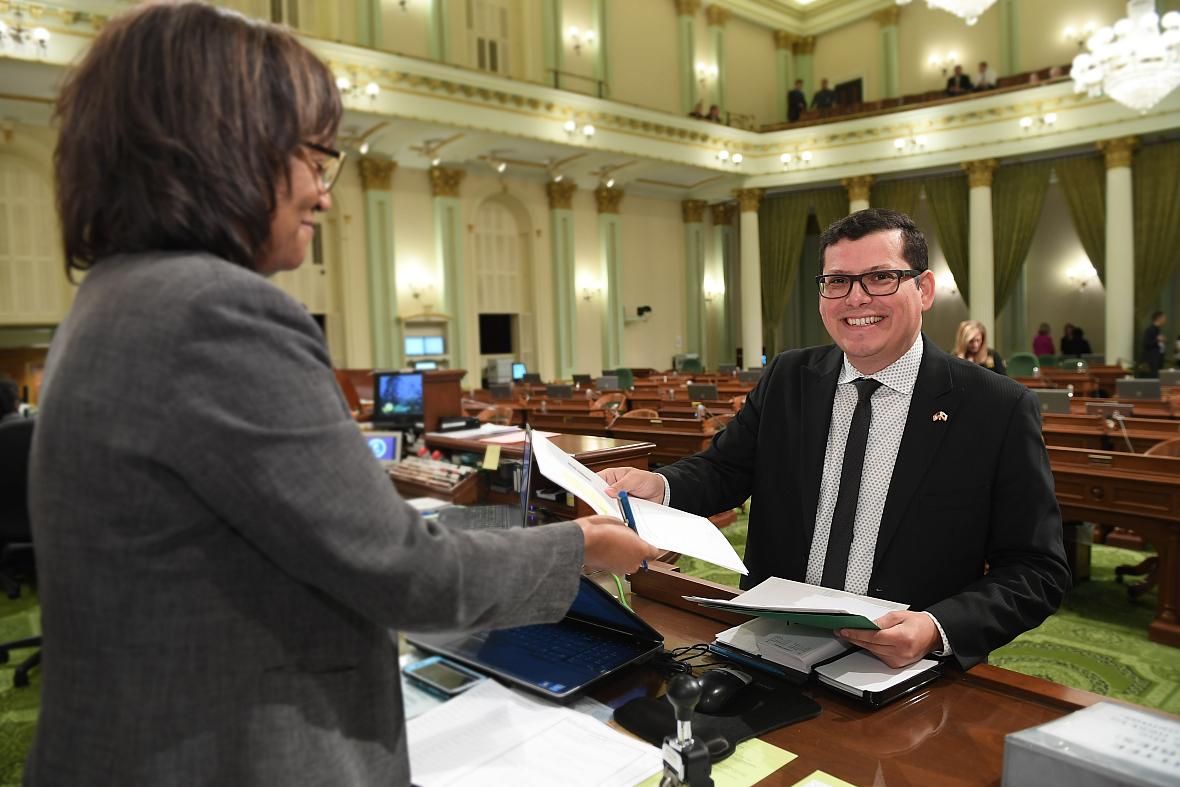Salas introduces 'most robust' valley fever legislation in state's history

Salas introduces valley fever legislation
Apparently undaunted by California Gov. Jerry Brown's October veto of legislation that would've brought new disease reporting guidelines and funding to the little-known respiratory disease known as valley fever, Assemblyman Rudy Salas has introduced an even more robust legislative package aimed at tackling the disease as cases rise to record highs in California.
The four bills included in the package introduced Monday — Assembly Bills 1787, 1788, 1789 and 1790 — address physician training, worker safety, annual reporting deadlines and laboratory testing procedures. Salas, D-Bakersfield, is also circulating a budget proposal to appropriate funding for valley fever research and awareness campaigns, according to a news release his office issued.
“Valley fever has had — and continues to have — an incredibly devastating impact on so many families and people in California, it is tragically underdiagnosed, and over recent years the rate of infections has spiked alarmingly across the state to a record high,” Salas said. “The state needs to take strong action to protect Californians from valley fever and must do more to help the thousands of individuals and families already affected by valley fever.”
Rob Purdie, a board member of the Bakersfield-based Valley Fever Americas Foundation, called it “the most robust effort in California history to address valley fever.”
“As a survivor of valley fever, I am really excited and encouraged to see this valley fever package rolled out,” Purdie said.
Valley fever, or Coccidioidomycosis, is caused by the Coccidioides fungus that grows throughout loamy soil in the southwestern United States. When disturbed, often through agricultural tilling, construction and high wind, microscopic fungal spores can become airborne and, once inhaled, cause valley fever. Most people are asymptomatic, but others develop flu-like symptoms, including fever, cough, headaches and chills. In some cases, when left untreated, the fungal spore can spread throughout the body and cause a lifetime of health issues, and in rare cases, death.
Valley fever infected 5,372 people in California in 2016, the most in a single year since reporting began in 1995. Although cases have not been officially tallied yet for 2017, early lab data suggest the tally could rise even higher as the state experiences an epidemic.
Those numbers, however, don’t tell the full story because of the inconsistencies in disease reporting guidelines, first uncovered by The Center for Health Journalism Collaborative. Experts suggest as many as 150,000 contract valley fever annually in the United States. Despite that, the Centers for Disease Control and Prevention have never tallied more than 23,000 cases.
Salas’ legislation seeks to address those inconsistencies in a targeted approach.
AB 1787 would set an annual reporting deadline for local health officers to report to the California Department of Public Health (CDPH) all cases of valley fever. Currently, there’s no deadline, and as a result, final case counts for the prior year can come as late as July.
AB 1788 would authorize CDPH to confirm valley fever cases through lab testing alone, doing away with the time-consuming and expensive process of also confirming cases with doctors. The state currently requires both. The bill would align California reporting standards with what’s already being practiced in Arizona, Purdie said.
“The de facto process in California is just laboratory reporting anyway, because the county [public health department] doesn’t have the resources to go and track down 3,000 doctors and say, ‘I need a clinical diagnosis to backup these results,’” Purdie said. “They’re already struggling.”
The bill could also provide a more accurate picture of the disease, Purdie said. Some counties, hampered with work and lacking in resources, likely don’t report every valley fever case because of the burden of confirming individual results with doctors, said Purdie.
AB 1789 strengthens protections for workers by requiring the Division of Occupational Safety and Health to adopt occupational safety and health standards for all state public works projects to prevent and control valley fever.
Cal/OSHA officials declined to comment on the legislation.
Just two months ago, Cal/OSHA fined six construction companies working on a solar farm in Monterey more than $240,000 for failing to protect their workers from valley fever. It’s unclear what other protections Salas’ bill would provide to workers. His office has not yet responded to The Collaborative’s requests for comment.
AB 1790 establishes physician training in the prevention, diagnosis and treatment of valley fever to increase accurate diagnoses, reduce delays and improve treatment for patients. It would require physicians and surgeons to complete a one-time mandatory continuing education course on valley fever, by Jan. 1, 2020. Any physician licensed on or after Jan. 1, 2019, would have until 2021 to complete the requirement.
Physician awareness remains one of the most critical issues in battling valley fever infections, especially in Kern County, which annually records more cocci cases than anywhere else statewide. Because valley fever is often mistaken for pneumonia, bronchitis and the flu, among myriad other misdiagnoses, it’s critical that doctors are aware of the disease when patients present common valley fever symptoms.
But much of the area affected by valley fever is considered a medically underserved region by the federal government. There’s a dearth of doctors, and a revolving door of rookie physicians who often come from outside the area and are unfamiliar with valley fever.
Salas' legislation last year, AB 1279, promised to revamp disease reporting guidelines and bring $2 million in funding to valley fever awareness efforts before it was stripped down in the legislative process. It enjoyed unanimous bipartisan support in both houses. But by the time it made it to the governor's desk, it required only that the state public health department devise a public awareness campaign. The governor vetoed it for lack of funding.
For more stories in this series, click here.

